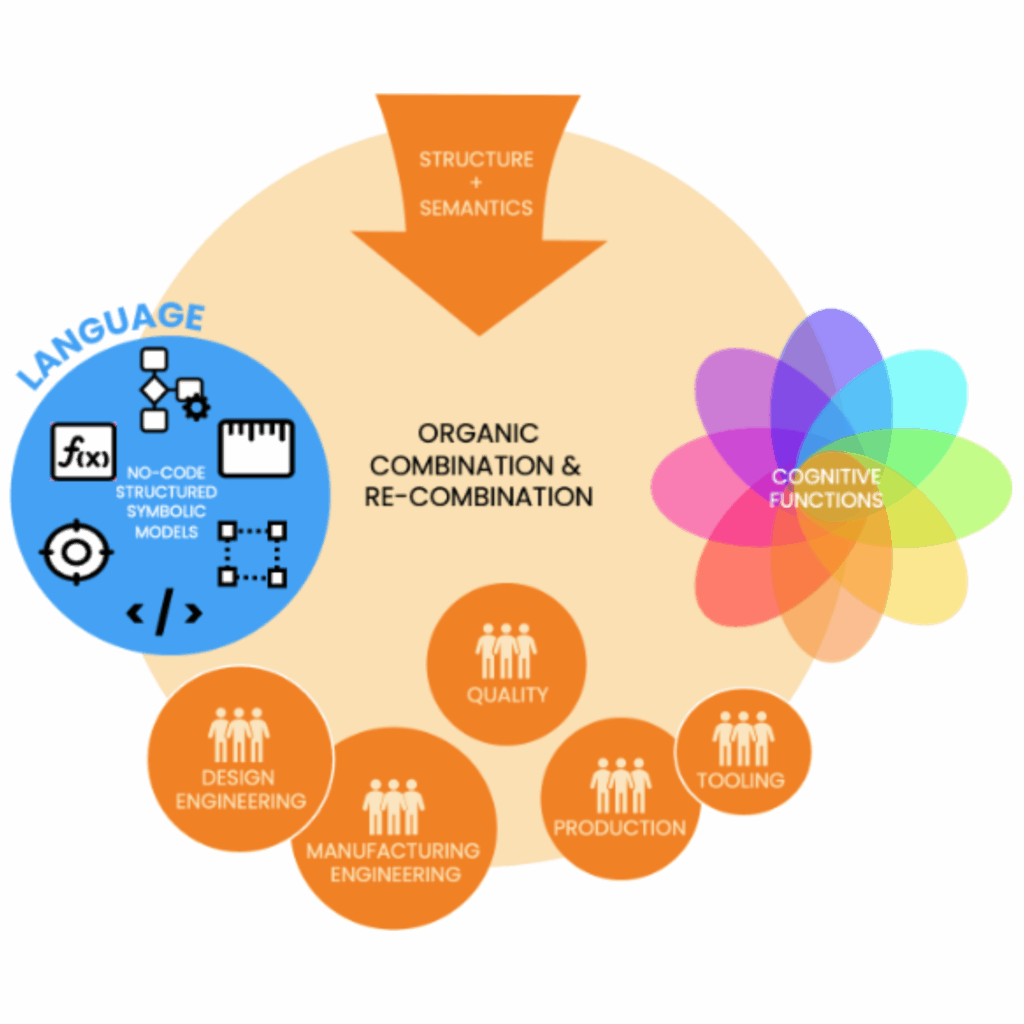A new kind of intelligence architecture for Complex Adaptive Systems such as Engineering, Manufacturing, and energy.
Most solutions try to automate complexity away.
Model-Based Cognition™ helps you become capable of it.
Enterprises face complexity that isn’t just high — it’s accelerating.
They need solutions that are transparent, tracible, and retain domain ownership
Model-Based Cognition™ makes AurosIQ not just smarter, but more human — giving your enterprise the ability to think better, not just faster.
In AurosIQ, every model is built to connect. Models representing requirements, processes, heuristics, or algorithms can combine dynamically based on shared structures and context. As conditions shift or new objectives emerge, models reconfigure – without rework or reprogramming. The system adapts with you, enabling cognition that scales as your enterprise evolves.
This language captures causality, constraints, trade-offs, and standards – making it readable by both humans and machines. No-code authoring means no prohibitive training of domain experts, or inefficiencies brought by specialized model-coding teams. The result? Models that express why, not just what, and do so in a way that’s sustainable, transparent and reusable.

To scale the democratized models across teams, systems, and business units, structure matters. Process Architects ensure consistent semantics, syntactic rules, and reference models with no-code management tools – so that knowledge authored by one expert can be understood and used by another. This top-down coordination ensures that the models created bottom-up don’t become fragmented silos, but interoperable assets.
AurosIQ mirrors the capabilities of organic intelligence with structured digital equivalents. It equips digital systems with the coordinated capabilities that define human intelligence – each modeled, applied, and evolved in real time by domain experts. These aren’t metaphors. They are engineered functions that work together to meet the complexity of modern enterprise head-on.
Empower domain experts – not just system architects – to build, evolve, and apply models directly. Stop burring operation critical knowledge in silos, documents or black box coding. Leveraging your experts means fewer bottlenecks, higher fidelity, and more sustainable transformation.
Through dynamic provisioning, MBC filters and surfaces only context-relevant knowledge models. Engineers and planners receive targeted guidance – no need to sift through everything to find what matters.
Execution models continuously interpret design activity, system conditions, or test results. As actions are taken, the system perceives their context and relevance – immediately and automatically.
Domain experts build symbolic, structured models, no code required, that capture not just content but intent: logic, constraints, rules, and relationships. This shared semantic language makes knowledge reusable, transparent, and machine-interpretable across platforms.
Rather than replace human judgment, MBC empowers it. Domain experts evaluate system proposals with full transparency – accepting, rejecting, or adapting them based on evolving goals and real-world nuance.

As new requirements, insights, or use cases emerge, they’re modeled and integrated into the existing framework. Knowledge adapts through use, allowing the system to evolve without starting over.
Schema-driven structures capture and persist design rationale, decisions, and dependencies. Knowledge is stored with full context, ready to inform future work, prevent repeat errors, and preserve hard-won expertise.
The system applies model-defined rules and calculations – automating evaluations like compliance and outcomes instantly, using logic authored by your experts.
When inconsistencies arise, the system proposes precise, model-driven actions, parameters to change, rules to apply, values to adjust – all rooted in the authoritative logic of your domain models.